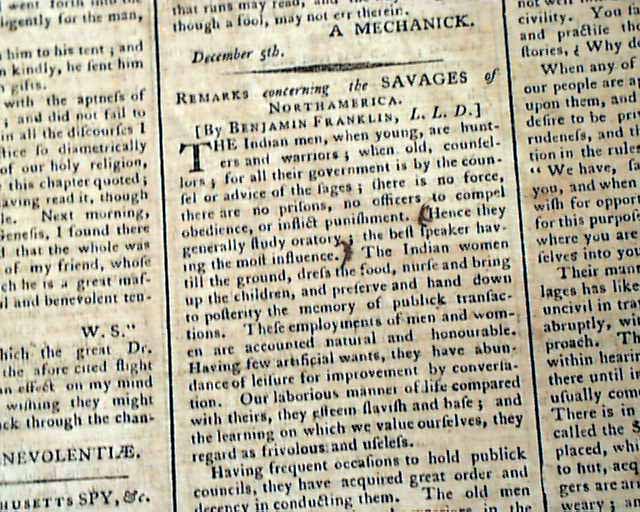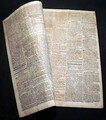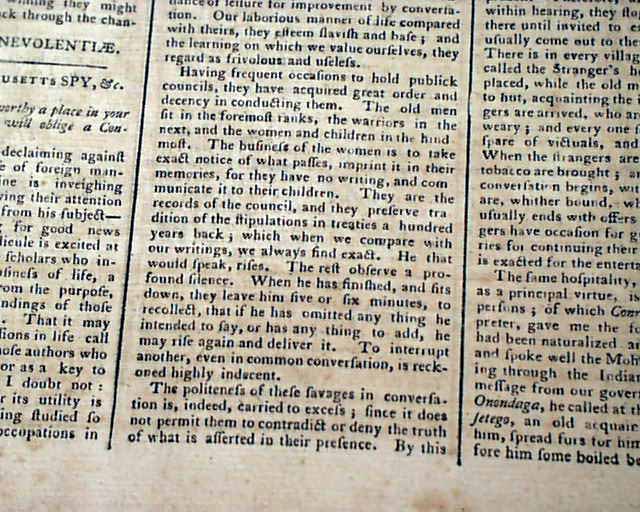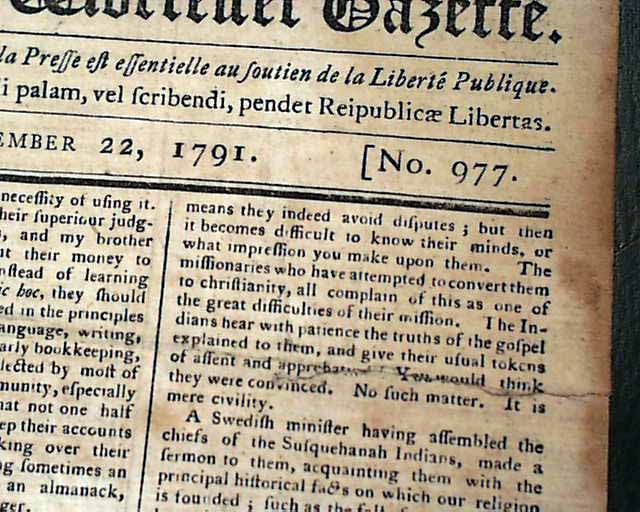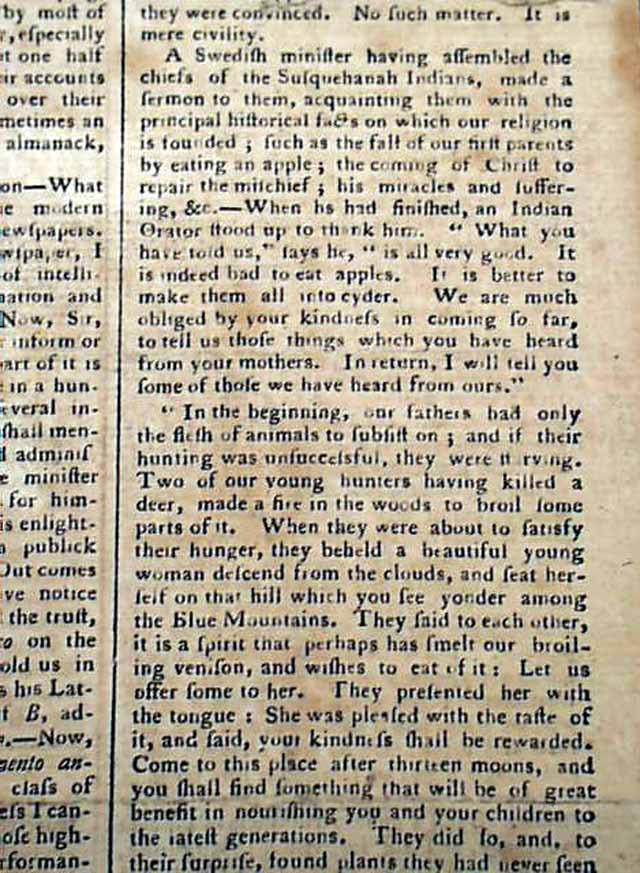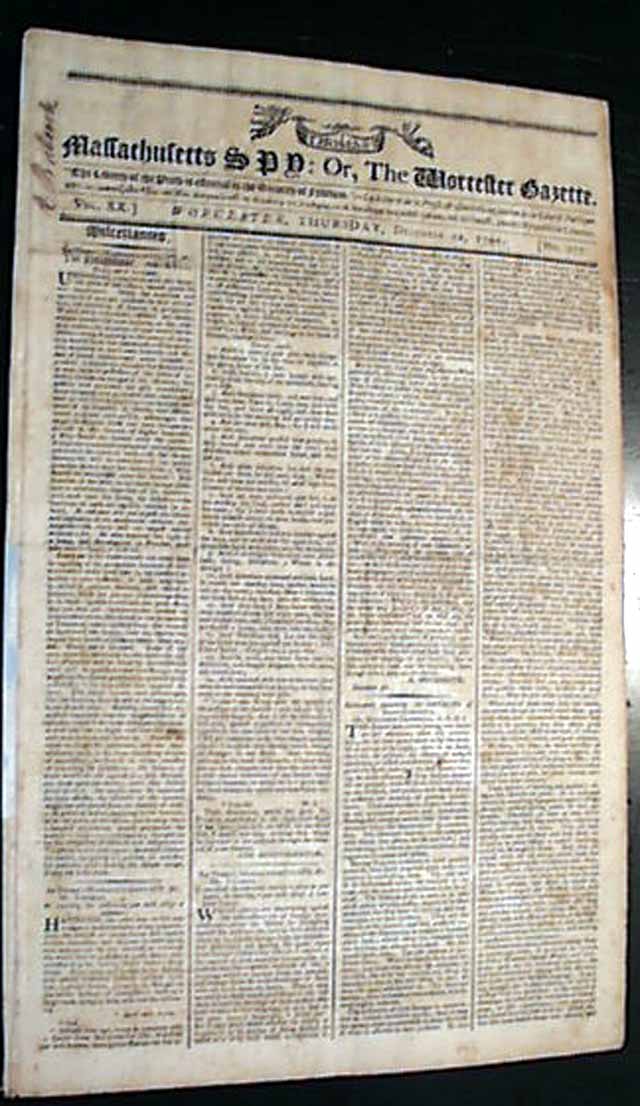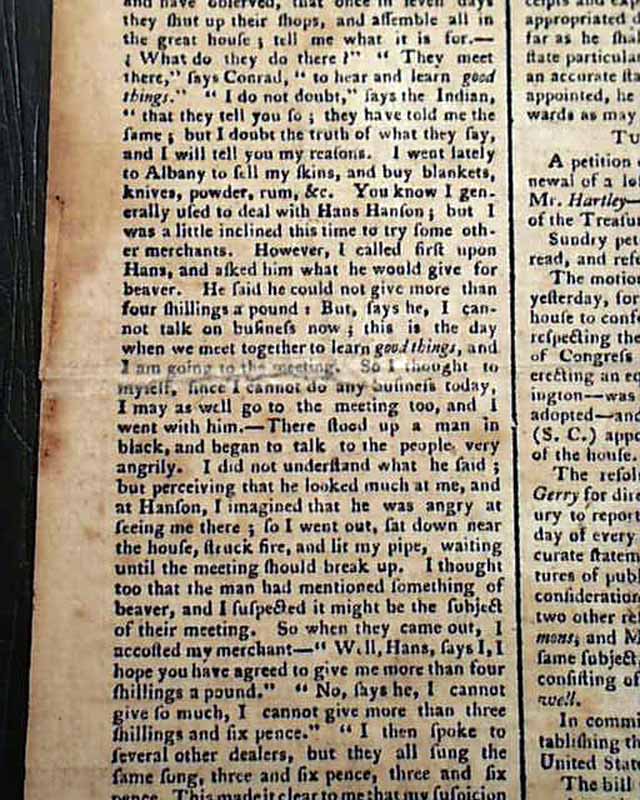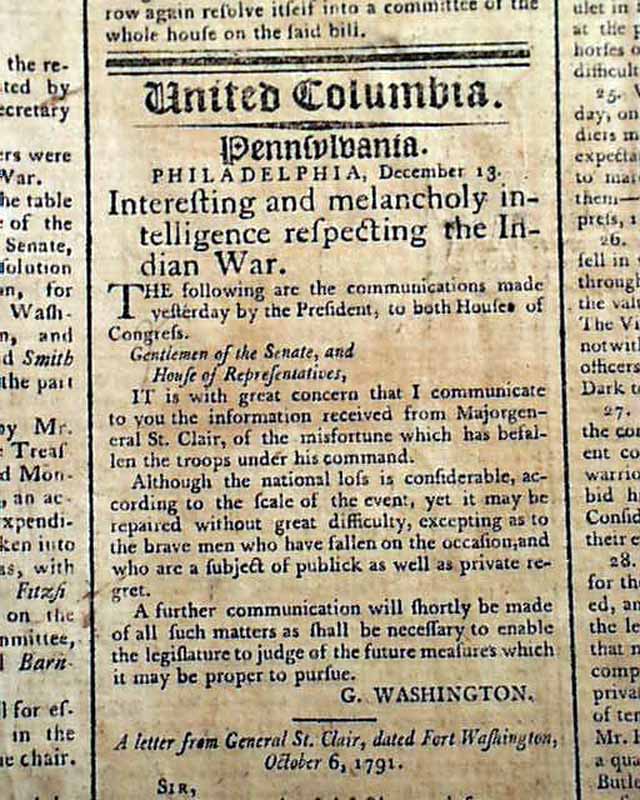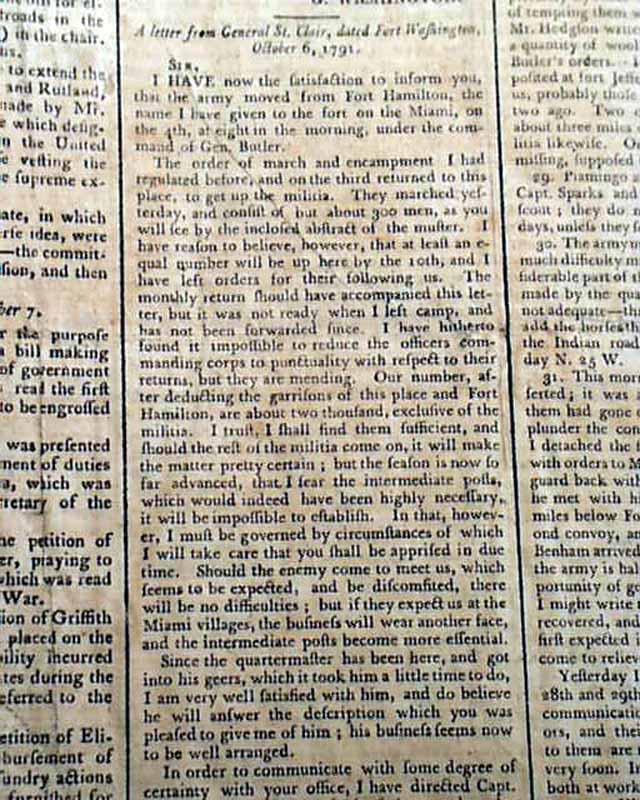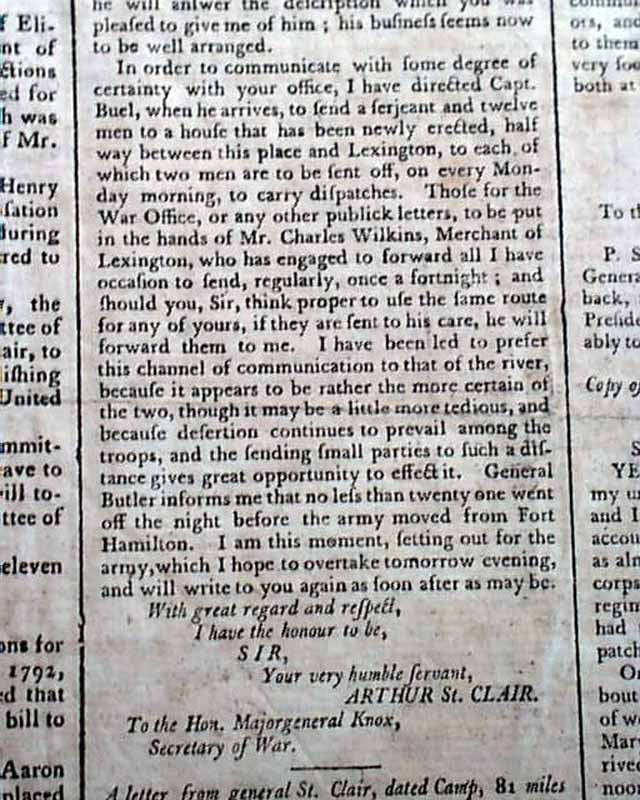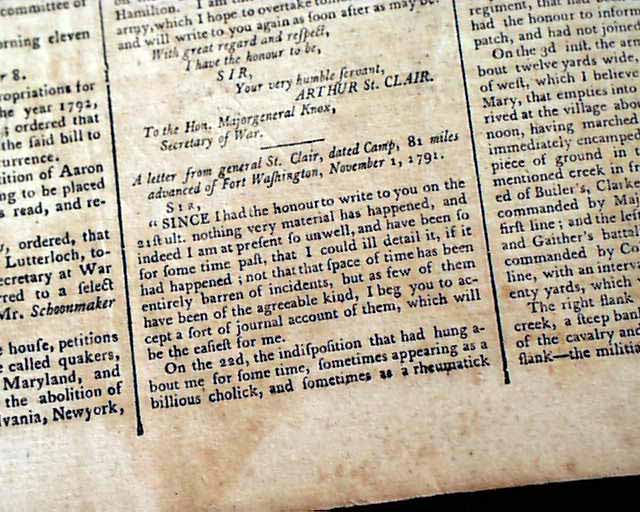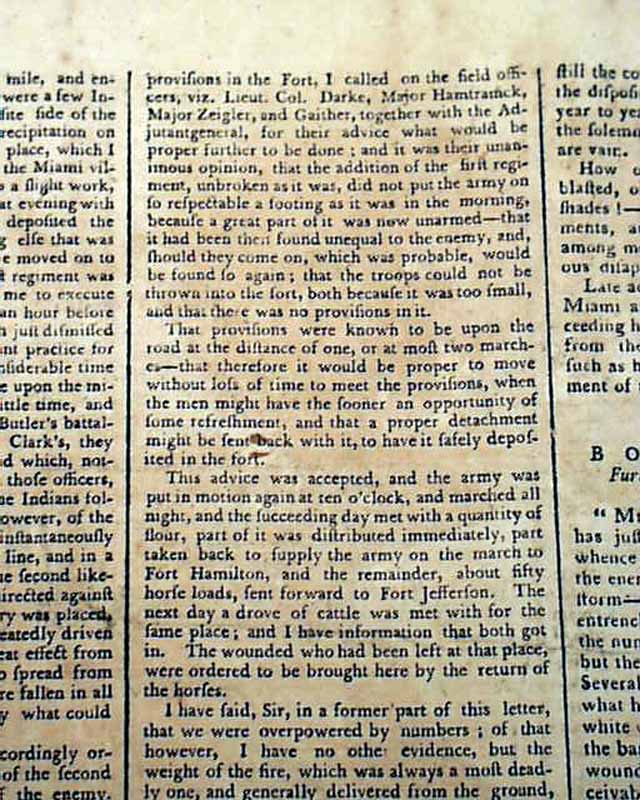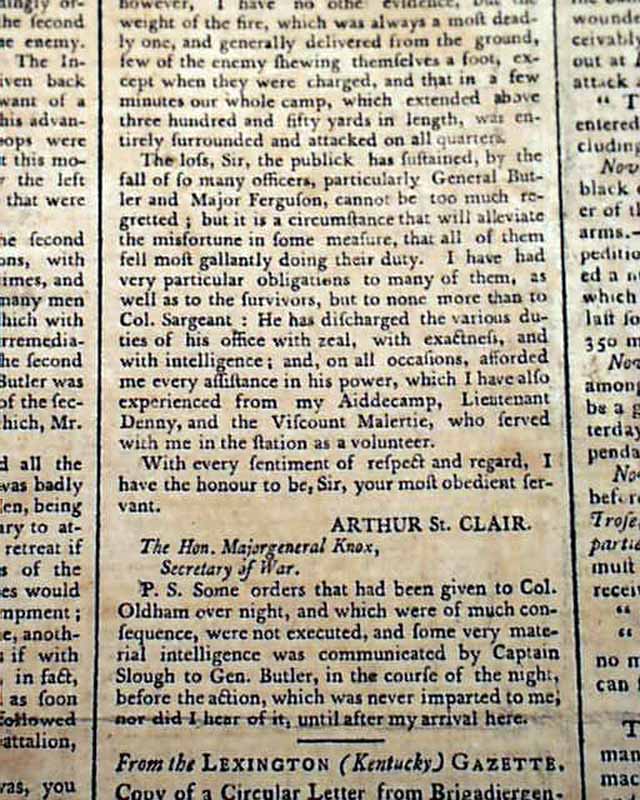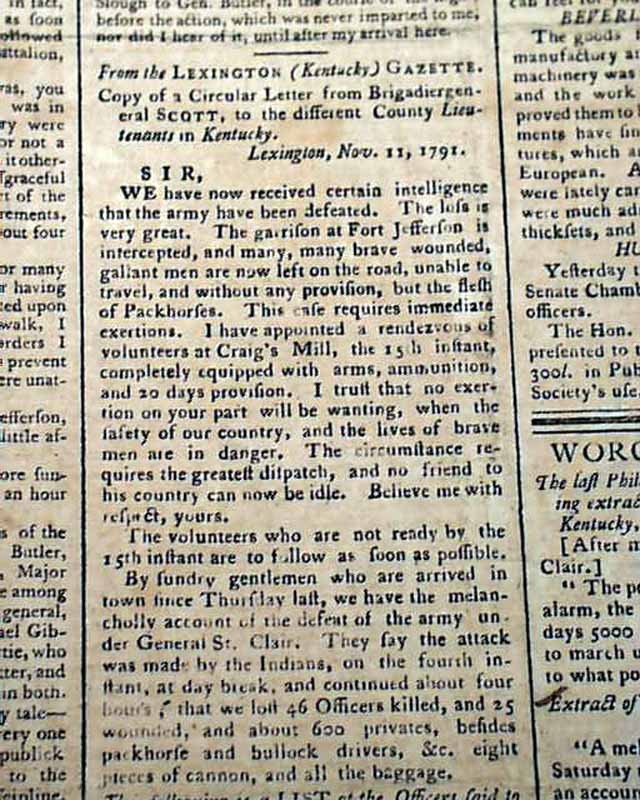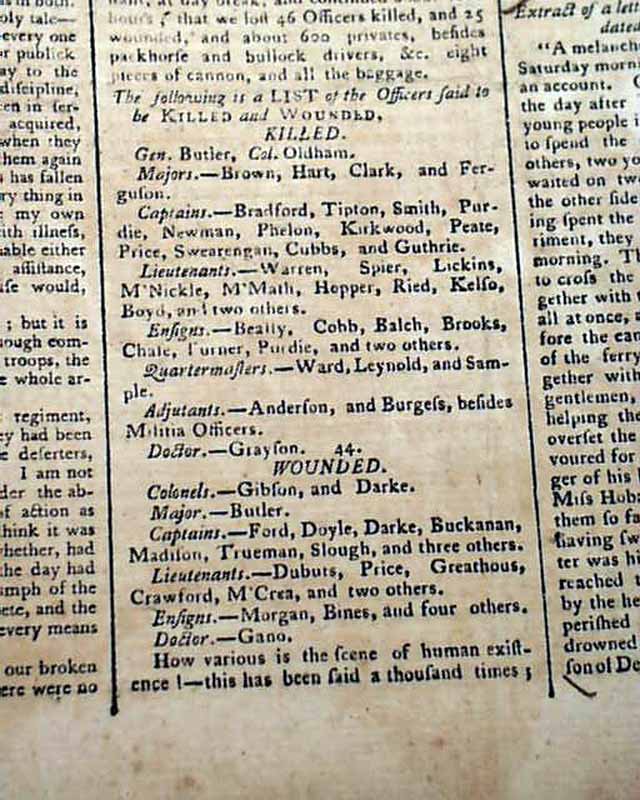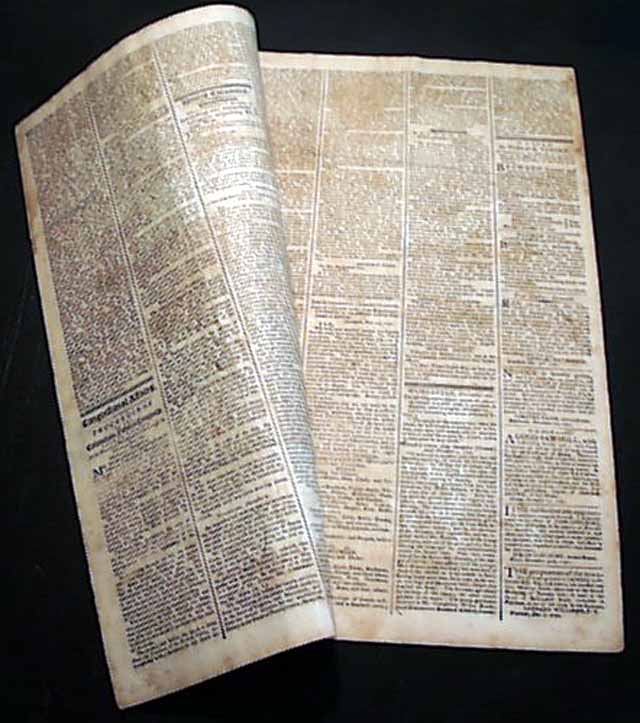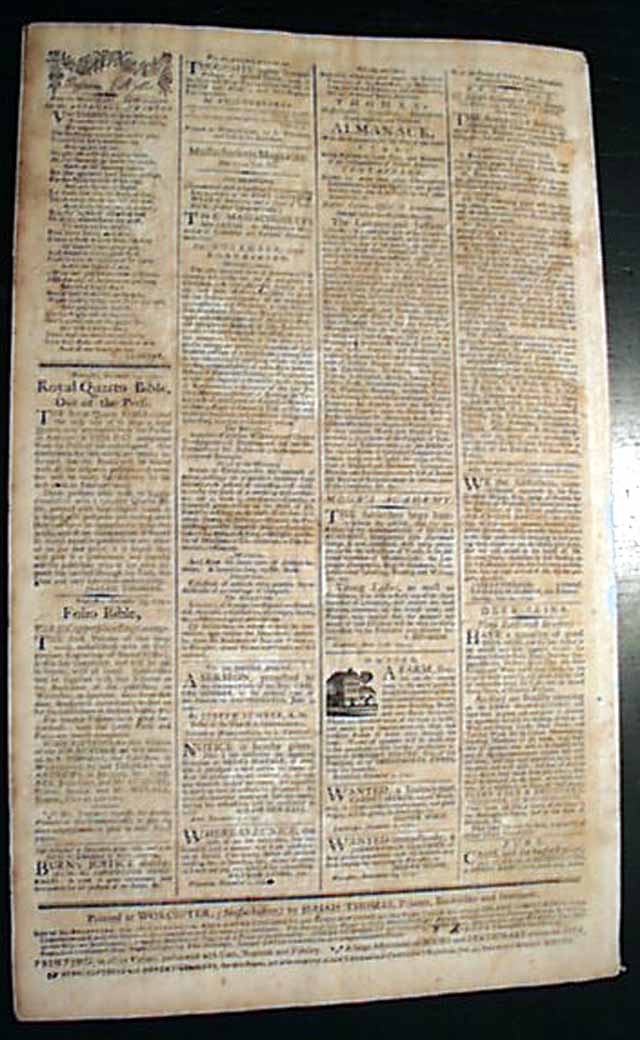Home > Back to Search Results >
Great & detailed issue on the Battle of the Wabash...
Great & detailed issue on the Battle of the Wabash...
Item # 701469
December 22, 1791
THOMAS'S MASSACHUSETTS SPY; OR THE WORCESTER GAZETTE, Boston, Dec. 22, 1791
* St. Clair's Defeat - Northwest Territory
* Battle of the Wabash River
* Native American victory
This is one of the best issues we have seen on the historic Battle of the Wabash, This was a tragic event in America's early military history, in which the American Army with 1,400 soldiers were swiftly devastated by an American Indian alliance of 1,500 warriors from nine different tribes.
Pages 2 and 3 have a wealth of content on this battle, headed: "Interesting & Melancholy intelligence Respecting the Indian War" which begins with a letter to Congress signed by G. Washington in which he introduces a very lengthy letter from General Arthur St. Clair with much detail on the Battle of the Wabash.
There are 3 letters, each signed by Arthur St. Clair with various details on the battle, followed by the: "...List of the Officers said to be Killed and Wounded." Photos show only portions of the report.
Four pages, archival strengthening at the spine where there is some minor loss, not close to any text. Nice condition.
background: The Battle of the Wabash, also called St. Clair’s Defeat, took place on November 4, 1791, near the Wabash River in present-day northern Ohio and was a catastrophic loss for the United States Army against a confederation of Native American tribes, including the Miami, Shawnee, and Delaware, led by Little Turtle and Blue Jacket. General Arthur St. Clair commanded a force of roughly 1,000 poorly trained militia and regulars, intending to secure the Northwest Territory for American settlement, but his troops were unprepared for the surprise pre-dawn attack by approximately 1,000–2,000 Native warriors. The assault resulted in the death of over 600 U.S. soldiers and hundreds more wounded, marking it the deadliest defeat in U.S. Army history by Native Americans. St. Clair barely escaped with his life, and the disaster exposed severe weaknesses in the fledgling American military, leading Congress to authorize the creation of a more professional army, ultimately commanded by “Mad” Anthony Wayne, which would achieve victory at the Battle of Fallen Timbers in 1794 and force the signing of the Treaty of Greenville, opening much of Ohio to settlement.
Category: The 1600's and 1700's


